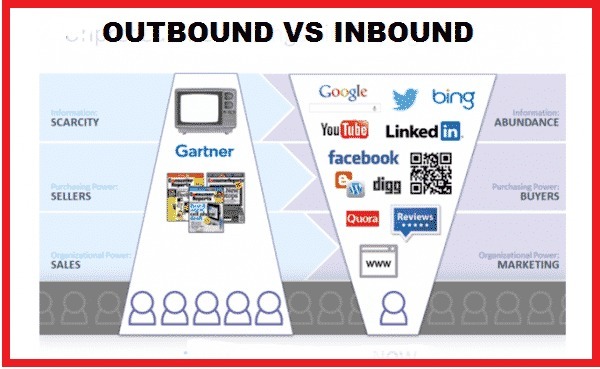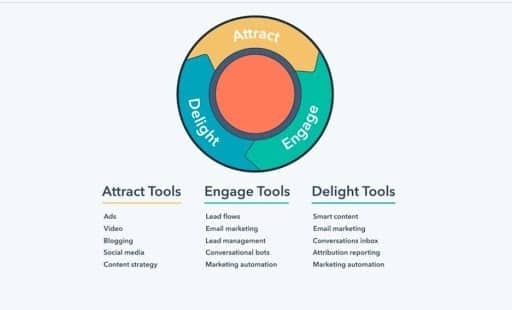These days, marketers have been talking about inbound marketing and how it has replaced traditional marketing as the number one marketing strategy. So, what is inbound marketing exactly?
Inbound marketing is an effective method to attract potential customers by creating helpful content that is tailored to their current buyer’s journey. More and more marketers now use this method over traditional marketing.
Read on to know more about what is inbound marketing and how it increases your revenue by generating more leads.

What is Inbound Marketing and How it Can Help with Your Marketing Strategy
What is the difference between inbound and outbound marketing?
Inbound marketing is about attracting new business and creating brand awareness using pull marketing methods.
The commonly used pull marketing methods are:
- Blogs
- SEO
- Content marketing
- Social media
- SMS marketing
- Events, etc.
In contrast, traditional or outbound marketing is interruptive and uses push marketing approaches such as:
- radio ads
- television ads
- cold calling
- telemarketing
- direct mail and
- trade shows
What is inbound marketing HubSpot?
HubSpot is a company that develops and markets its software for inbound marketing. They also offer a free course (with certification) on inbound marketing. The training course teaches inbound marketing fundamentals and how to implement them in your business.
What is an inbound marketing campaign?
An inbound marketing campaign is performing a set of steps and using the necessary tools to align all your marketing channels around a goal.
That goal might be:
- marketing qualified leads
- total customers or
- increased visit-to-lead conversion rate
The campaign often starts with an offer that you promote through your marketing channels. The offer should be something relevant and valuable for your audience. Finally, nurture your prospects from that offer and move them to your sales funnel to become your customers.
What is an inbound marketing strategy?
An inbound marketing strategy consists of several channels and different types of content to bring potential customers to your website.
The 3 inbound marketing strategies are:
- Attracting Strategies
- Engaging Strategies
- Delighting Strategies
What is inbound content marketing?
Inbound content marketing is creating and distributing content to attract visitors into the site so you can convert them into customers.
More helpful reading: What Is SEO?
Pros and Cons of Inbound Marketing
Although inbound marketing is the widely used marketing method, it doesn’t come without its imperfections. Here are the pros and cons of inbound marketing.
Pros
- Economical. Less expensive than outbound marketing.
- Source of reliable information.
- Noninvasive.
- Builds long term relationships.
- Can go viral.
Cons
- Time-consuming.
- Tracking ROI can be difficult without using any tracking software.
- Competitive since most marketers are already adopting it.
- Requires a diverse set of skills.
Costly. There’s an opportunity cost of your time with DIY inbound marketing. Similarly, there’s a cost of professional services if you hire a marketing team.
Fundamentals of Inbound Marketing
Here’s what to look out for when starting an inbound marketing campaign.
1. Know your ideal audience
Before creating offers, blasting out messages, and writing content — you must consider who will be your target audience and then create buyer personas.
After you have determined your target audience, you should identify specific problems related to their role. And then figure out how your products and/or services can provide solutions to their problems.
2. Understand what buyer’s journey they are in
Before thinking of giving your prospects a sales call, you should consider what buyer’s journey they are in. They might be at a stage where they want to research on their own to identify their problems. And so it would not be the right time to give them a sales call.
Providing adequate information in your content ensures you are giving value that potential customers want. You can then assist them in the next stage, which is identifying solutions to their problems.
3. Give value and not a sales pitch
When you understand your prospect’s buyer journey and know their specific needs, you now have the opportunity to help them.
Through lead nurturing, you should deliver industry insights and helpful advice to your prospects.
Research shows that 80% of business decision-makers choose to know more about a company through articles rather than through the ads.
The path to nurture leads is about giving value to your prospects as they proceed to the next stage of the buyer’s journey.
With that said, you should provide your prospects with:
- whitepapers
- tip sheets
- educational blog articles
- case studies, etc.

4. Promote your content to gain more prospects
When your targeted audience is looking for solutions to a problem, many of them turn to search engines to seek information, interact in social media, or read blogs.
Here’s a tip.
The search terms or keywords they use to look for solutions to a problem are the bridge between their attention and your content. Thus, you should identify what those keywords are and use them to create your content.
And then promote your content through:
- site pages
- blogs
- videos
- webinars
- social media
5. Trust turns followers into leads
If you truly know your audience, you eventually build a following of prospects who like and trust you.
How?
- Create content that educates them in each stage of the buyer’s journey.
- Make sure to deliver that content at the right time when they’re looking for information about a product or service.
When your prospects are done evaluating solutions and decide to make a purchase, you will most likely be their first choice.
Why?
- They find your content relevant and informative.
- They are already familiar with your brand, products, and services.
The Takeaway
The next step after launching your first inbound marketing campaign is tracking its performance and refining your next approach. It is crucial that you continue to discover what content marketing methods work best for your target audience. Finally, make sure to implement those methods on your next campaign.
Need help with inbound marketing to attract more prospects? Set an appointment with our team today!
